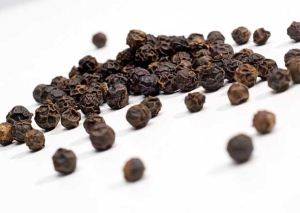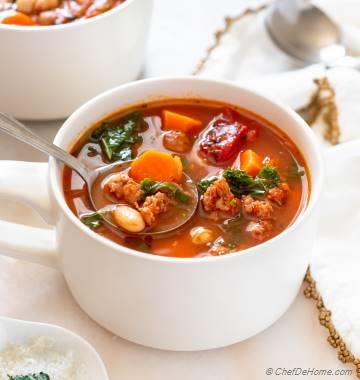Most cooks today don't appreciate the plentiful and inexpensive supply of a spice that was once so valuable and rare it was sometimes used as currency. Its merit was so high that many of the European sailing expeditions during the 15th century were undertaken with the main purpose of finding alternate trade routes to the Far East, the primary source of the prized peppercorn and other spices. Pepper in one form or other is used around the world to enhance the flavor of both savory and sweet dishes. Because it stimulates gastric juices, it delivers a digestive bonus as well. The world's most popular spice is a berry that grows in grapelike clusters on the pepper plant (Piper nigrum), a climbing vine native to India and Indonesia. The berry is processed to produce three basic types of peppercorn—black, white and green. The most common is the black peppercorn, which is picked when the berry is not quite ripe, then dried until it shrivels and the skin turns dark brown to black. It's the strongest flavored of the three—slightly hot with a hint of sweetness. Among the best black peppers are the Tellicherry and the Lampong. The less pungent white peppercorn has been allowed to ripen, after which the skin is removed and the berry is dried. The result is a smaller, smoother-skinned light-tan berry with a milder flavor. White pepper is used to a great extent for appearance, usually in light-colored sauces or foods where dark specks of black pepper would stand out. The green peppercorn is the soft, underripe berry that's usually preserved in brine. It has a fresh flavor that's less pungent than the berry in its other forms. Black and white peppercorns are available whole, cracked and coarsely or finely ground. Whole peppercorns freshly ground with a pepper mill deliver more flavor than does preground pepper, which loses its flavor fairly quickly. Whole dried peppercorns can be stored in a cool, dark place for about a year; ground pepper will keep its flavor for about four months. Green peppercorns packed in brine are available in jars and cans. They should be refrigerated once opened and can be kept for one month. Water-packed green peppercorns must also be refrigerated but will only keep for about a week. Freeze-dried green peppercorns are also available and can be stored in a cool, dark place for up to six months.
From The Food Lover's Companion, Fourth edition by Sharon Tyler Herbst and Ron Herbst. Copyright © 2007, 2001, 1995, 1990 by Barron's Educational Series, Inc.
Black Pepper
Posted In: Food Ingredients
| Author:
Savita
Photo Credit: http://gayatriinternational.net




